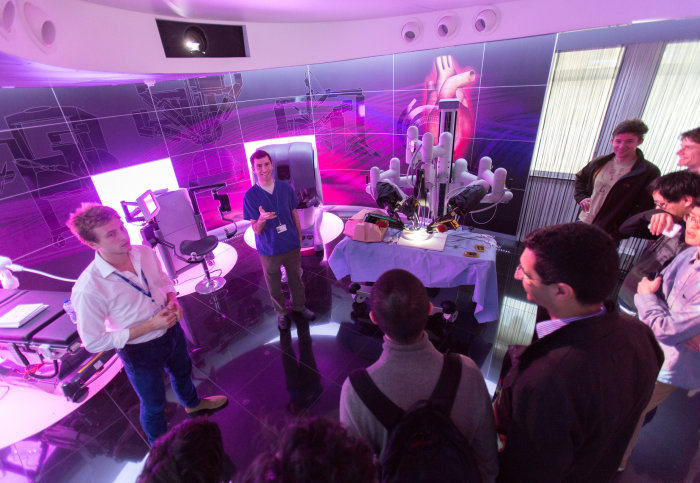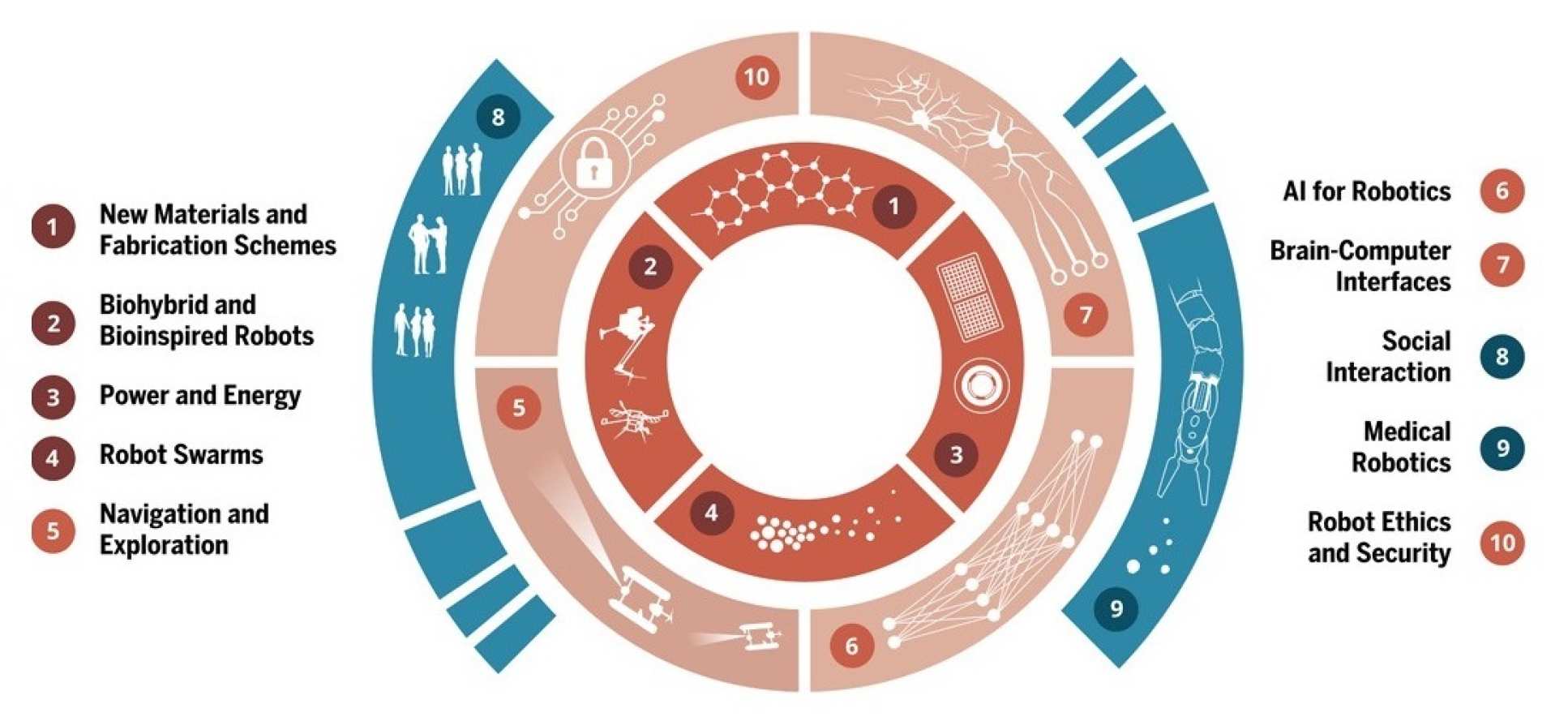10 challenges for the future of robotics

Medical robotics in the Hamlyn Centre
With robotics on the rise, Imperial researchers look to the future, exploring everything from nature-inspired robot swarms to the ethics of AI.
Robotics is often still considered futuristic sci-fi, but the rapid rate of innovation suggests that we are well and truly living in a robot age. Where do we go from here?

The journal Science Robotics, edited by Imperial researcher Professor Guang-Zhong Yang, who is Director and Co-founder of the Hamlyn Centre, recently formed an expert panel and identified ten ‘grand challenges’ facing modern robotics science.
These grand challenges look at the key areas where we should expect to see exciting and extraordinary developments over the next decade, and which questions deserve attention as the pace of invention increases.
1. What will robots be made of?
Rather than conventional gears and motors, robots could be made from new groups of materials in the future, such as materials that harvest and store energy or are biodegradable. Techniques like 3D printing have revolutionised robotics, but new technology could cover a wider size range and we will increasingly see smart materials used in robotics.
2. What can roboticists learn from nature?
Designing robots from nature (bioinspiration) offers agility and improved performance. These can lead to robots with increased mobility and adaptability to their environment. Some roboticists are even using biological materials to design biohybrid robots, such as using living cells to help robots self-heal, respond to changing environments, and use cheap, eco-friendly fuels.
Video above: AquaMAV, developed at Imperial, dives like a gannet and launches like a flying fish to collect water samples.
3. How will robots be powered?
Robots are increasingly used in extreme environments such as space and deep-sea exploration, the need for small, high-energy batteries is becoming more important. Next-generation technologies such as fuel cells and supercapacitors offer some very interesting solutions to the problem of finding safe and affordable batteries. Being able to extract energy from their surroundings and then store a lot of it is also crucial, and inspiration is being drawn from animals able to use carbohydrates to power incredibly high-energy activities.
4. Can robots work together?
It might sound like slightly alarming sci-fi, but using many smaller, simpler and cheaper robots to fulfil a task might be just as, if not more, effective than just using one complex robot. Nature once again provides abundant examples of animals behaving cooperatively to navigate, hunt and build. Swarms that integrate computation and storage functions (hyperconvergence) will play a huge part in this, as will the combination of consumer electronics like smartphones with autonomous systems such as drones.

5. How will robots find their way around?
Creating robots that can understand and adapt to the world around them is particularly important for those used in uncharted, extreme environments such as deep seas, Arctic ice, volcanoes and space. With little ability to transmit or receive communication, robots must be ready to look after themselves. Being able to perceive the world like a human does will help, choosing what knowledge to learn, forget, and connect. Again, multiple robots with different functions might be a solution, allowing them to coordinate and share information from many different sources.
6. How will robots make decisions?
The recent artificial intelligence renaissance has opened the doors to a huge number of possibilities for robotics. One aim of AI in robotics will be to push towards robots that can recognise their own limitations, ask for help and learn to become smarter. Being able to map how human intelligence works will inform AI development, as will some serious thinking about how robots should make decisions using moral and social reasoning.

7. How will robotics read our minds?
Robotics has the potential to change the lives of people with disabilities by using brain activity to directly control prosthetics and communication devices. Such interfaces could also improve communications and add extra elements to games and entertainment. Research in this area will focus on finding the best ways to sense and acquire data in an affordable and usable way, and it may be that the best robotics in this area work with other technology such as eye tracking.

8. Will robots be able to interact socially?
With an increasing desire to put robots into human environments like hospitals, it is important that roboticists address the challenges of social interaction. Signals from our voices, faces and bodies are incredibly subtle and nuanced, so creating a robot able to recognise such signals and respond appropriately is a huge undertaking. In addition, the differences between societies have to be taken into account, as well as general social and moral norms – and these interactions need to be adaptable and sustainable over the long term, not just in quick conversations.
9. How will robots be used in medicine?
Robots are increasingly used to assist surgeons in carrying out precise, minimally invasive keyhole surgeries – at the moment, these are controlled by the surgeon, but could become more autonomous in the future. A major issue is creating robots able to recognise the complexity and variety of human anatomy. Other areas of interest include implantable robotic devices such as organ replacements, and micro- and nano-robots that could be used within the body.

10. Who is responsible for a robot’s actions?
 As we rely more on robots, AI could be used unethically, including by employers, criminal justice systems, and governments, so users of robotics still need to be held responsible. A major discussion point is also jobs being displaced by AI, and the huge societal shifts such a dramatic change in the workforce is likely to cause. One area of work where robotics may be useful is security, but this has to be under control and well regulated, without risks of serious escalation.
As we rely more on robots, AI could be used unethically, including by employers, criminal justice systems, and governments, so users of robotics still need to be held responsible. A major discussion point is also jobs being displaced by AI, and the huge societal shifts such a dramatic change in the workforce is likely to cause. One area of work where robotics may be useful is security, but this has to be under control and well regulated, without risks of serious escalation.
Article text (excluding photos or graphics) © Imperial College London.
Photos and graphics subject to third party copyright used with permission or © Imperial College London.
Reporter
Bridie Kennerley
Communications and Public Affairs
